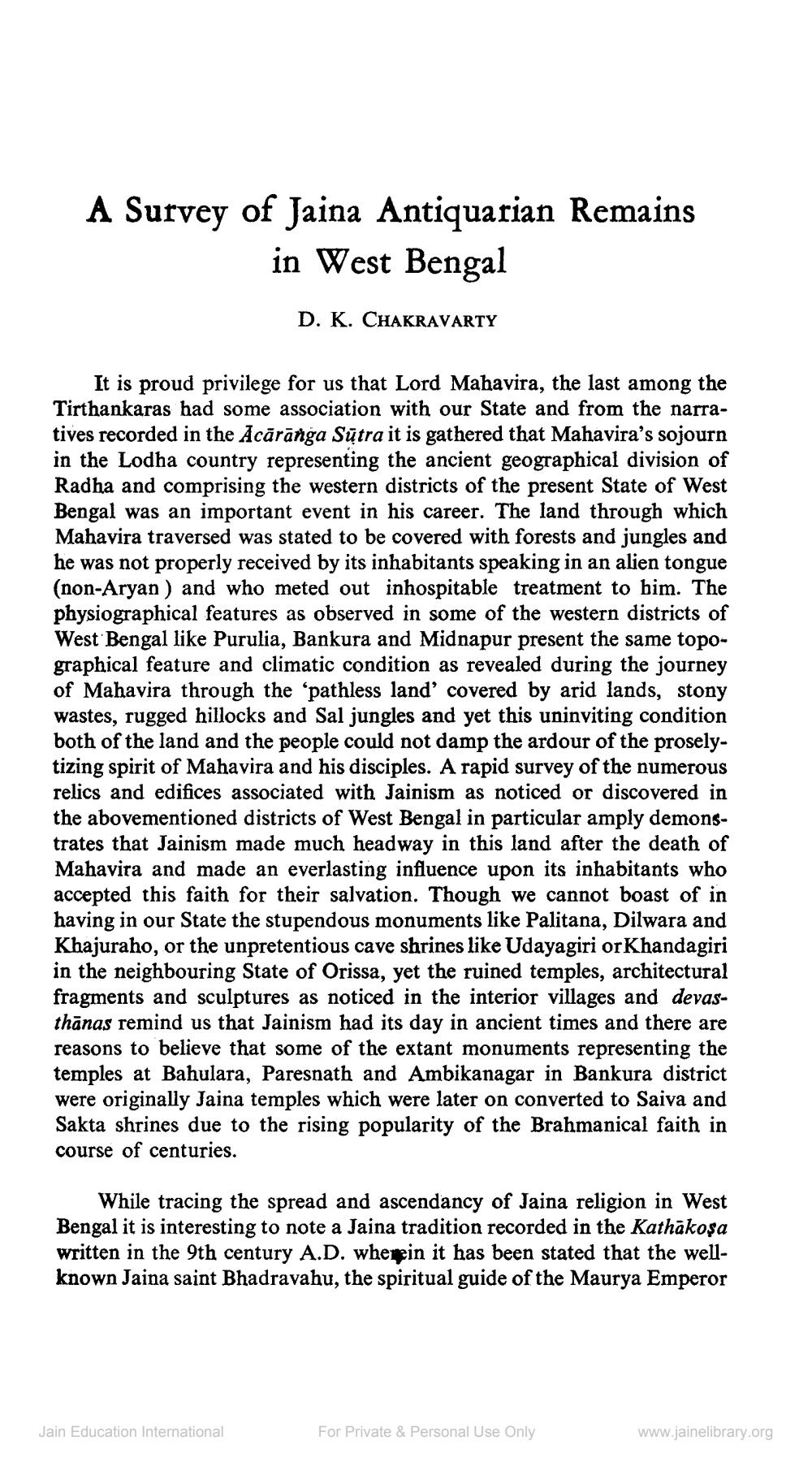________________
A Survey of Jaina Antiquarian Remains
in West Bengal
D. K. CHAKRAVARTY
It is proud privilege for us that Lord Mahavira, the last among the
as had some association with our State and from the narratives recorded in the Acārānga Sūtra it is gathered that Mahavira's sojourn in the Lodha country representing the ancient geographical division Radha and comprising the western districts of the present State of West Bengal was an important event in his career. The land through which Mahavira traversed was stated to be covered with forests and jungles and he was not properly received by its inhabitants speaking in an alien tongue (non-Aryan ) and who meted out inhospitable treatment to bim. The physiographical features as observed in some of the western districts of West Bengal like Purulia, Bankura and Midnapur present the same topographical feature and climatic condition as revealed during the journey of Mahavira through the 'pathless land' covered by arid lands, stony wastes, rugged hillocks and Sal jungles and yet this uninviting condition both of the land and the people could not damp the ardour of the proselytizing spirit of Mahavira and his disciples. A rapid survey of the numerous relics and edifices associated with Jainism as noticed or discovered in the abovementioned districts of West Bengal in particular amply demonstrates that Jainism made much headway in this land after the death of Mahavira and made an everlasting influence upon its inhabitants who accepted this faith for their salvation. Though we cannot boast of in having in our State the stupendous monuments like Palitana, Dilwara and Khajuraho, or the unpretentious cave shrines like Udayagiri or Khandagiri in the neighbouring State of Orissa, yet the ruined temples, architectural fragments and sculptures as noticed in the interior villages and devasthānas remind us that Jainism had its day in ancient times and there are reasons to believe that some of the extant monuments representing the temples at Bahulara, Paresnath and Ambikanagar in Bankura district were originally Jaina temples which were later on converted to Saiva and Sakta shrines due to the rising popularity of the Brahmanical faith in course of centuries.
While tracing the spread and ascendancy of Jaina religion in West Bengal it is interesting to note a Jaina tradition recorded in the Kathākosa written in the 9th century A.D. wherein it has been stated that the wellknown Jaina saint Bhadravahu, the spiritual guide of the Maurya Emperor
Jain Education International
For Private & Personal Use Only
www.jainelibrary.org




